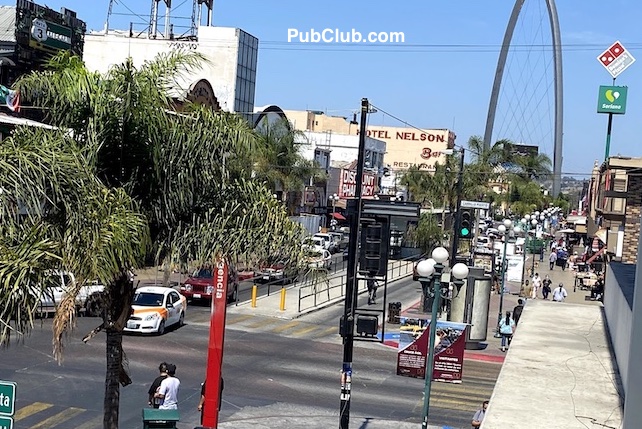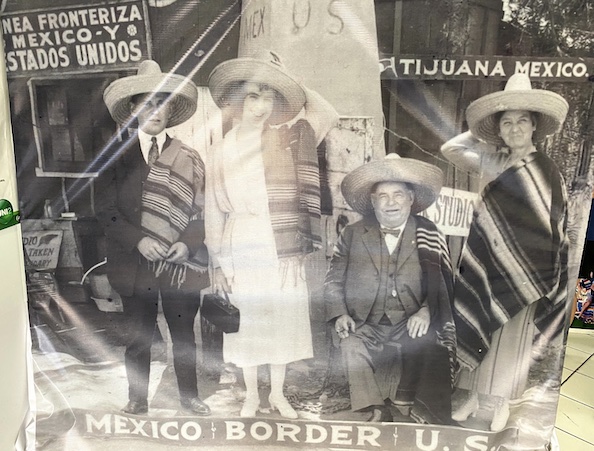
By Kevin Wilkerson, PubClub.com Nightlife Blogger
The repeal of Prohibition came on Dec. 5, 1933 with the passing of the Twenty-First Ammendment to the U.S. Consitution.
It ended some 13 years of it being illegial to distribute and sell – tho not consume, so it was still okay to drink, wherever that might have been – alcohol. And, as we saw with the recent Pandemic, when one element of life goes away, others rise up in thier place. With the Pandemic it was working remotely and Amazon deliveries to your door. In the 1920s it was smuggling and speakeasies.
Prohibition also gave rise to the first Sin City. The Las Vegas of its day. Tijuana, Mexico.
Unable able to get a drink at home people – Southern Californians in particular – simply went to Mexico. And right across the border from San Diego is Tijuana. So it was a no-brainer for everyday folks and the major celebrities of the day – Clark Gable, Douglas Fairbanks, Jean Harlin, Charlie Chaplin, Bing Crosby and Rita Heyworth (whose name was Margarita Cansino at the time) – to party in Tijuana and the northern Baja, California cities of Rosarita and Ensenada. Rumor has it that Al Capone slept (as well as drank and gambled) in and around Tijuana.
There, they found drinking, gambling and the Caesar’s salad (more on that later). Tijuana delivered the debauchery people could not find at home.
For the rich and famous, there was the elegant Agua Caliente casino – now a school – that had an Olympic-size pool, Turkish baths, steam caves, a horse-racing track and a landing strip for private planes. It was Las Vegas before there was a Las Vegas. For others there was – and still is – Avenida Revolucion, the heartbeat of the sins Americans could not experience, with bars and all the alchol people could drink. There was not a speakeasy in sight. Didn’t need one.
To some, this was an outrage. Expecially a Republican congressman with the fun-sounding name of Phil Swing. Phil wasn’t much for swinging, tho, because all of that action was going on right under his nose and he couldn’t do a damned thing about it. Except he could. Sort of, anyway. He worked with the federal government to establish a curfew at the border crossing. At first it was 9 p.m., and later changed to 6 p.m. Daytripppers had to either start early to party or stay overnight.

Still, the partying did not stop, even tho Agua Caliente closed in 1938, five years after the repeal of Prohibition. Tijuana to this day remains a cut-loose place for nightlife. San Ysidro just south of San Diego (45 minutes by trolley from downtown) is the world’s busiest border crossing.
Prohibution also gave birth to the Caesar’s salad. As legend has it, on July 4th, 1924 Caesar Cardini, who owned Ceaser’s restaurant in Tijuana, created the Caesar’s salad. His restaurant was packed with Americans and he ran out of food, so he rolled out a table with what he had left – stalks of lettuce, olive oil, raw egg, croutons, parmesan cheese and Worcestershire sauce – and made the legendary dish tableside for his customers. The restaurant (and salad) are still there today at 5th and Revolución.
Just south of Tijuana in Ensenada is where the margarita was supposedly invented. Bar Andaluz, claims to have created it in 1948. Then again it could have been at Hussong’s up the street. There, they tell you that a Hussong’s barkeep, Don Carlos Orozco, first made it in 1941. Sounds like the where-was-the-Pina-Colada-created mystery in San Juan, Puerto Rico.
You’ll have no trouble finding those drinks in either of those places today. And at least in the case of Tijuana, you have Probition to thank for it, and much more.
The Repeal Of Prohibition Posts
• How The End Of Prohibition Helped Shape U.S. Nightlife, Bars & Liquor Sales (pubclub.com)
Leave a Reply
You must be logged in to post a comment.